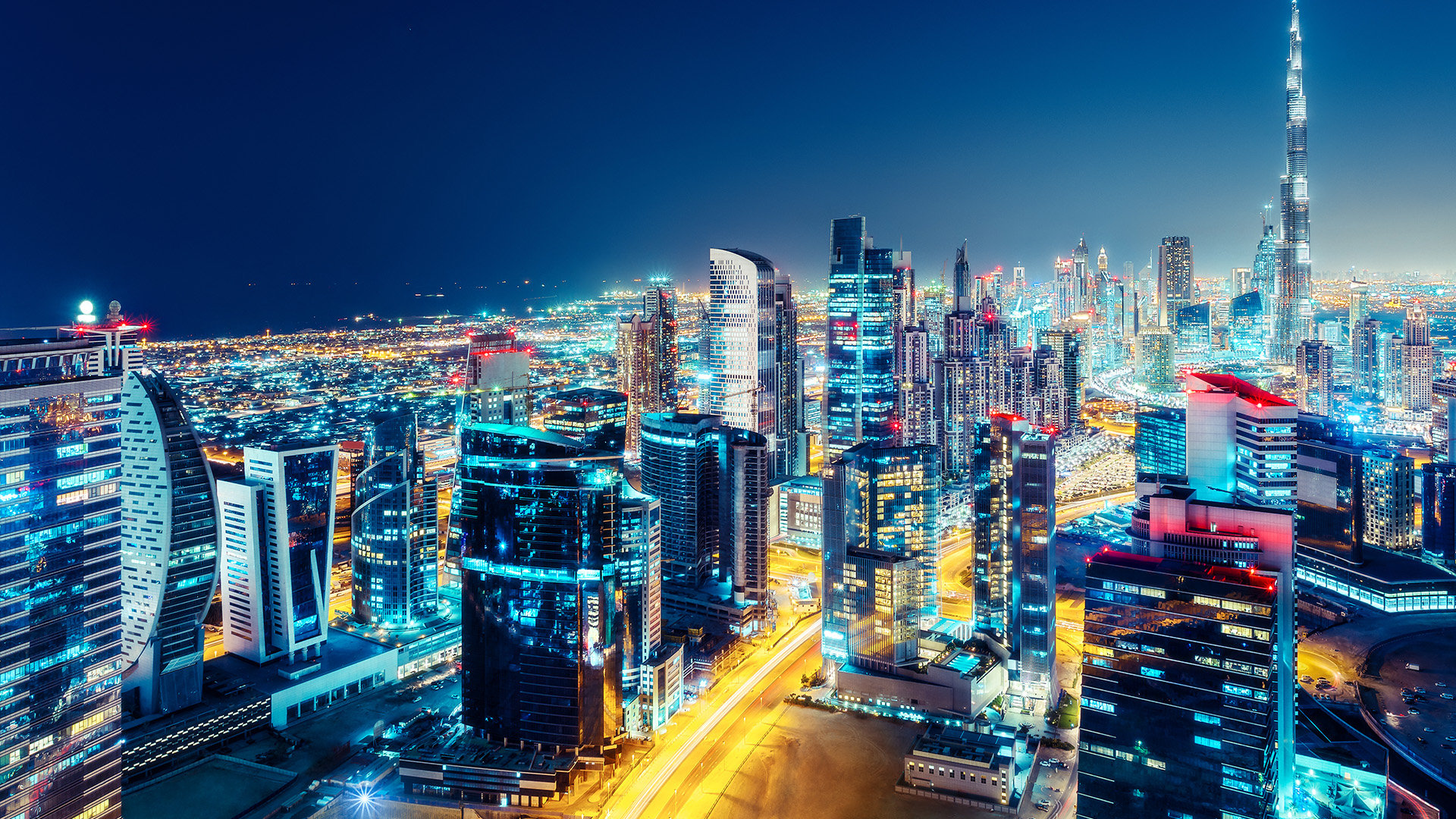This article was first published in
Tank Storage Magazine (February/March 2022 edition). In this article Nicholas Kramer (partner, Dubai), Angela Croker (partner, Dubai) and Rekha Ajoodha (associate, Dubai) look at the possibilities for the energy transition in the Middle East.
Is net-zero a reality in the Middle East?
On 12 December 2015, global leaders of 196 countries congregated at COP 21 in Paris to negotiate and resolve the world’s first legally binding treaty on climate change (the Paris Agreement), which sets a goal to limit global warming to well below 2°C, preferably to 1.5°C, compared to pre-industrial levels.
Underpinning this goal is the energy transition, aptly defined by S&P as ‘a transformation of the global energy sector from fossil-based systems of energy production to renewable energy sources’ aimed at reducing energy-related greenhouse gas emissions (including CO2) in order to limit the increase of global temperature. The switch to lower and/or zero carbon based technologies, the acceleration of carbon capture and energy storage technology, the establishment of carbon markets, the use of carbon offsets and the boom in sustainable finance availability are all key drivers in this transition.
The energy landscape in the GCC and beyond
The Paris Agreement works on a ‘ratchet mechanism’ requiring each party to submit their nationally determined contributions (NDCs) every five years, setting out their plans for climate action, with the first NDCs submitted in 2020.
The UAE was the first country in the Gulf Cooperation Council (GCC) region to sign and ratify the Paris Agreement in 2016. In 2017, the UAE launched its ‘Energy Strategy 2050’ that aims to increase the contribution of clean energy in the total energy mix from 25% to 50% by 2050 and reduce the carbon footprint of power generation by 70%. This strategy contemplates 44% clean energy, 38% gas, 12% clean coal and 6% nuclear energy.
In its second NDC, submitted in December 2020, the UAE reiterated its 2050 strategy and is earmarked as the first MENA region to commit to an economy-wide emission reduction target of 23.5% in greenhouse gas emissions for the year 2030, relative to business-as-usual (BAU) scenario emissions. The BAU approximates 310 million tonnes, assuming a moderate annual economic growth rate based on historical growth needs. In an effort to achieve these targets, the Abu Dhabi Department of Energy announced new clean energy generation projects focusing on solar and nuclear sources and the Dubai Future Council of Energy unveiled a detailed roadmap to achieve a carbon neutral economy. In early October 2021, the UAE announced the UAE Net Zero by 2050 strategic initiative, making the UAE the first Middle East and North Africa nation to do so.
Saudi Arabia, one of the region’s largest economies, swiftly followed suit, later in October 2021, by pledging to reach net-zero by 2060. These plans include the development and installation of 58.7 GW of renewable power sources (amounting to 30% of the Saudi Arabia’s power mix) and to cut down on 130 million tonnes of CO2 by 2030. Additionally, national oil company Saudi Aramco has pledged net-zero carbon emissions for scope 1 and 2 greenhouse gases across its operations a decade earlier (2050).
Table 1 summarises the net-zero targets set by GCC and other Middle Eastern countries.
|
|
Country
|
Target
|
Methods
|
| |
Saudi Arabia |
2060 |
Renewables, carbon capture, utilisation and storage, direct air capture, hydrogen, low carbon fuels |
| |
UAE |
2050 |
Few details other than the country has three of the largest solar power plants in the world and recently inaugurated the region’s first nuclear power plant |
| |
Bahrain |
2060 |
Renewables, afforestation, carbon capture |
| |
Qatar |
2030 |
National climate change action plan to reduce greenhouse gas emissions by 25% by 2030 and carbon intensity from LNG facilities by 25% |
| |
Oman |
2050 |
Renewable energy with a target of 20% of electricity to be delivered from renewable sources by 2027 |
| |
Iraq |
2030 |
1-2% reduction in emissions, Mesopotamian Revitalisation project which contemplates afforestation, modernising water administration and generating clean energy |
| |
Israel |
2050 |
Few details other than coal will be phased out by 2025 |
The Middle East Energy Transition reports approximately US$2.8 billion (€2.5 million) of renewable energy project contracts in the first half of 2021, with no contract awards for oil- or gas-fuelled power plants in the MENA region.
Green hydrogen
Although the Middle East is typically associated with oil and gas, it is also abundant in renewable energy resources and large areas of land suitable for project development. It also has a strong track-record of investing in clean energy projects through international investment, financial institutions, sovereign funds and government backed entities, placing the region in a prime position to take the reins in the green hydrogen market. Despite the lack of regulatory framework for the licensing and implementation of such projects, CO2-free hydrogen is of particular interest to policymakers in the region. The UAE environment minister was quoted in 2020 as saying ‘hydrogen produced by renewables in the very best locations in the UAE could become cost competitive in the next five years.’
By 2050, the strategy consulting arm of PwC, Strategy&, claims the hydrogen market could be worth US$300 billion per annum. With the cost of green hydrogen having already fallen by 50% since 2015 and with a further 30% reduction on the cards by 2025, according to IHS Markit, opportunities for states with large renewables capacities, such as the Gulf states, will be plentiful.
Table 2 sets out some of the hydrogen projects underway in the GCC.
|
|
Project
|
Jurisdiction
|
Description
|
| |
Green Hydrogen MoU |
Dubai |
An MoU has been entered into between Emirates Nuclear Energy Corporation (ENEC) and EDF Energy setting out their intention to cooperate on R&D projects exploring the production of green hydrogen, powered by carbon-free nuclear energy |
| |
Abu Dhabi Hydrogen Alliance |
Abu Dhabi |
An MoU signed by Mubadala Investment Company (Mubadala), the Abu Dhabi Abu Dhabi National Oil Company (ADNOC) and ADQ to establish the Abu Dhabi Hydrogen Alliance which intend to establish Abu Dhabi as a leader of low-carbon green and blue hydrogen in emerging international markets. The partners will also work together to build a substantial green hydrogen economy in the UAE |
| |
EOM Green Ammonia |
Saudi Arabia |
ACWA Power and Air Products have formed a joint venture for the development of a US$5 billion green hydrogen-based ammonia plant which is one of the world’s largest green hydrogen projects to be located in the NEOM development in Saudi Arabia. It will include the integration of over 4 GW renewable power from solar, wind and storage; produce 650 tonnes per day of hydrogen by electrolysis using Thyssenkrupp technology; produce nitrogen by air separation using Air Products technology; and produce 1.2 million tonnes per year of green ammonia using Haldor Topsoe technology. It is due to come online in Q1 2025 |
| |
Hyport Duqm Green H2 Project |
Oman |
A project to be undertaken by ACWA Power, Air Products and NEOM (as JV partners) and Thyssenkrupp and Haldor Topsoe (as technology partners) for the development of a green hydrogen plant in the Special Economic Zone at Duqm, Oman, in cooperation with the Public Authority for Special Economic Zones and Free Zones (OPAZ). The facility’s electrolyser capacity is estimated between 250-500 MW in the first phase of development. |
Carbon capture and storage
Notwithstanding the positive steps taken to implement the Paris Agreement, through introducing renewable energy (including hydrogen) into the energy mix and undertaking ‘clean’ hydrocarbons and energy efficiency measures, the net-zero targets are ambitious, given the Middle East’s continued dependence on hydrocarbon combustion for power generation and operation of industrial and refining sectors, where electricity cannot be used in all instances. Analysts also forecast a climb in emissions from the oil and gas industry in the Middle East, through to at least 2040, due to an increased dependence on natural gas and crude oil and global emissions are expected to grow over the pandemic recovery period.
A possible solution for carbon abatement in the industrial and refining sectors is carbon capture and storage/sequestration (CCS). As indicated in the above table, some GCC countries are already undertaking R&D initiatives centred around CCS with the KACST-Technology Innovation Center on Carbon Capture and Sequestration in Saudi Arabia, the Qatar Carbonate and Carbon Storage Research Center in Qatar and the Sitra Carbon Capture System in Bahrain. In Abu Dhabi, Masdar and ADNOC launched the Middle East’s first Joint Venture for carbon capture usage and storage and a sum of US$150 million from Qatar, Kuwait and the UAE has been allocated to support CCS research.
However, the CCS industry is still in its infancy, when compared to early adopters (such as North America, Europe and China), due to the lack of regulatory framework, precedent and investor appetite in this industry in the Middle East. On the other hand, investment could grow if there is an increased demand in the market for products made from the recycled gases – for example, recycled greenhouse gases could be used to make synthetic fuels for export in the petrochemical, refining, cement, fertiliser and power sectors.
Conclusion
The Middle East, an oil and gas producing region that is fiscally dependent on these hydrocarbons, is facing a unique and intense period of change, as it navigates the contraction of global oil-and-gas demand, due to, among other things, direct investor pressure for clarity on long-term investment strategies for a 1.5°C world, as well as zero-emission targets, in response to the Paris Agreement and commitments set forth in NDCs.
It is expected that renewables, led by solar, will, in the short term, continue to dominate the strategy for curbing energy emissions in the Middle East. However, the region remains heavily dependent on hydrocarbon combustion for power generation and operation of industrial and refining sectors, making the net zero targets somewhat ambitious.
Whilst it remains to be seen how the Middle East countries will implement their respective net zero strategies, green and other low-carbon hydrogen and the implementation of CCS initiatives are exciting developments, creating optimism in the market that these measures will be key to achieving the carbon emission reduction targets.






